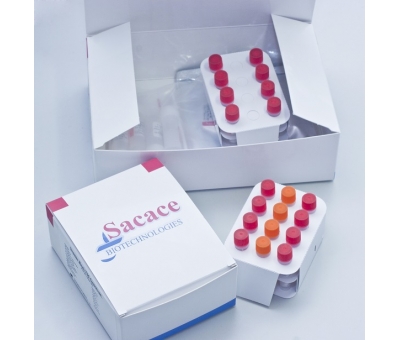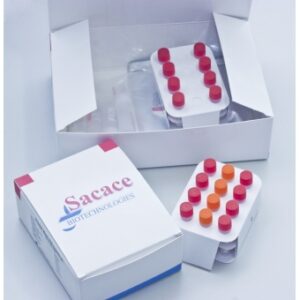Trichomonas vaginalis Real-TM with DNA extraction kit 100 tests
Available on backorder
Expiry Date
Real Time PCR test for detection of Trichomonas vaginalis
EGP 15,149.23 EGP 18,936.54
Available on backorder
STDs (sexually transmitted diseases) refer to a variety of bacterial, viral and parasitic infections that are acquired through sexual activity. Some STDs, such as syphilis and gonorrhea, have been known for centuries — while others, such as HIV, have been identified only in the past few decades. STDs are caused by more than 25 infectious organisms. As more organisms are identified, the number of STDs contin ues to expand. Common STDs include: chlamydia, gonorrhea, herpes, HIV, HPV, syphilis, gardnerella, mycoplasma and trichomoniasis. Approximately 18.9 million new cases of STDs (excluding HIV) occur each year in the U.S. More than half of all people will be infected with an STD at some point in their lifetime. Many STDs affecting women show no early signs or symptoms. As a result, they go undetected and untreated until complications arise. The consequences of untreated STDs are often more serious in women, including: infertility, tubal pregnancy, chronic pain, cervical cancer and other complications. For example, pelvic inflammatory disease (PID), a preventable complication from certain STDs, occurs in more than one million women each year. Early screening, diagnosis, counseling and treatment can stop the spread of STDs.Enzyme immunoassay(EIA) is the diagnostic method most commonly used for the laboratory diagnosis of STD infections, but EIA has a lower detection limit of 10000 elementary bodies and thus lacks sensitivity required for a screening assay, especially in asymptomatic men. Culture has been the “gold standard” for the diagnosis of many STD and have high sensitivity and specificity however due to a slow-growing tendency it takes 2-3 days to get a result and also requires an invasively taken specimen. Nucleic acid based amplification assays using polymerase chain reaction(PCR) have a lower detection limit of one to 10 elementary bodies and specificities comparable with culture. They also offer all the advantages of non-culture tests in terms of specimen transport, batching, and rapid processing time of approximately 2-3 hours . The improved sensitivity of these assays allows the use of non-invasive specimens such as first catch urine (FCU) specimens. PCR tests using FCU specimens have been shown to have sensitivities ranging from 87% to 97% for men and 82% to 93% for women with specificities of 98–100%.
Trichomoniasis is the most common, curable sexually transmitted disease in the world. It is also one of the three most common vaginal infections in women. According to the World Health Organization’s annual estimates, there are an estimated 7.4 million trichomoniasis cases each year in the United States, with over 180 million cases reported worldwide. Trichomoniasis is caused by a one-celled parasite, Trichomonas vaginalis. Trichomoniasis affects both women and men. The most common location of infection in women is the vagina, and in men it is the urethra.
Based on 0 reviews
Be the first to review “Trichomonas vaginalis Real-TM with DNA extraction kit 100 tests”
Shipping Policy
Payment & Delivery:
- You agree to provide valid shipping address, Email address and phone numbers, if we received false information, we are not responsible to any action happen to the product delivered.
- Delivery period may be not known as each item has its own delivery period as well as the seller delivery terms are not the same, so we don't share exact delivery period before we get confirmed information concerning this part, you don't need to confirm your order before receiving such information.
- Some items will have certain Expiry dates, if this information is available on the item, we will share it, if not, please request the expiry date after adding the item to the cart.
- Some items have expiry date that you don't satisfied with, So Please request new expiry date to the same item.
- When placing an order, you will confirm your personal information, shipping and billing address, payment methods, and the subtotal amount of the order.
- You will receive an email confirming your order with your order number, if you wish to contact support you will need to use the specific order number.
- Payment methods are the following:
A- Online payment with credit card (we accept Visa and MasterCard )
B-Cash Upon Delivery
C- Bank deposit in our bank account
- You agree to provide valid and accurate payment information.
Refund Policy
- The buyer has the full rights to return products that are shipped from BGENZ.com.
Cancellation / Return / Exchange Policy
Return Policy:
- The buyer has the full rights to return products that are shipped from BGENZ.com.
- Products can be returned within 14 days of receipt of shipment in most cases.
- Some products have different policies or requirements associated with them.
- Some kits or reagents will need technical report with pictures showing the defect or malfunction.
- You have the right to choose to replace the product or refund your money.
General Inquiries
There are no inquiries yet.






There are no reviews yet.